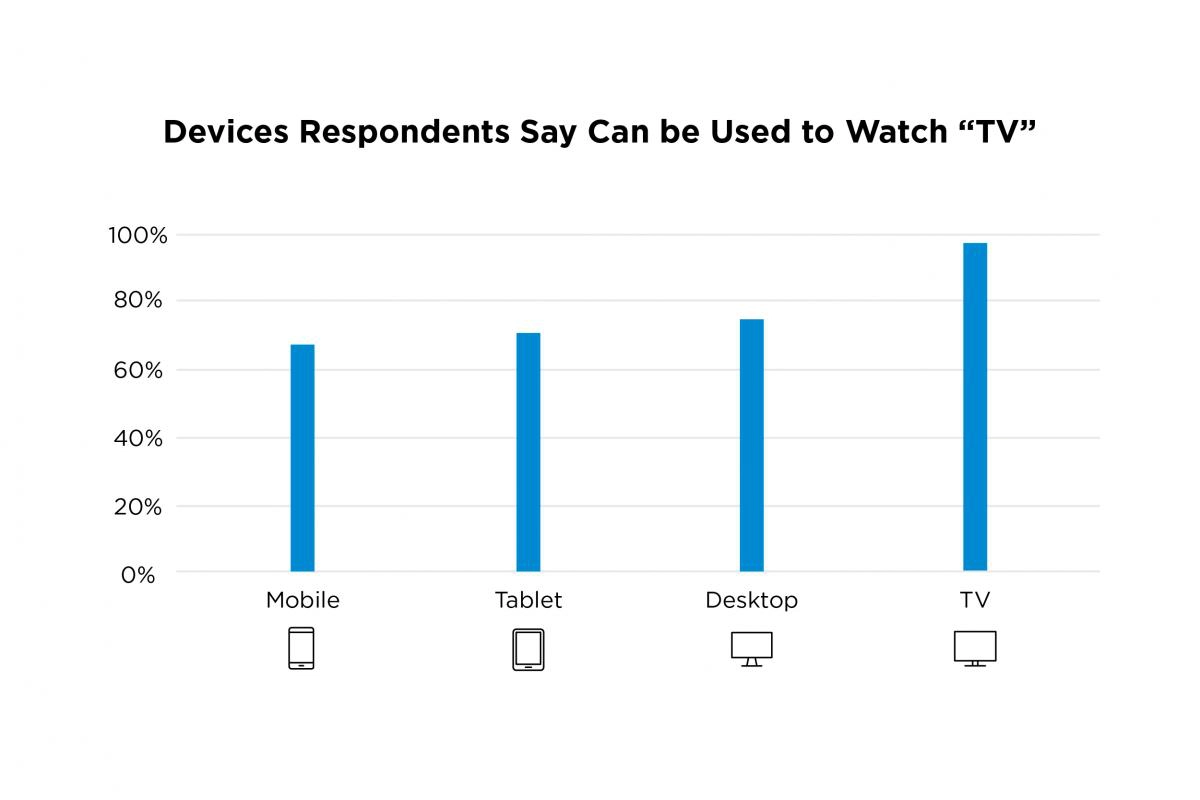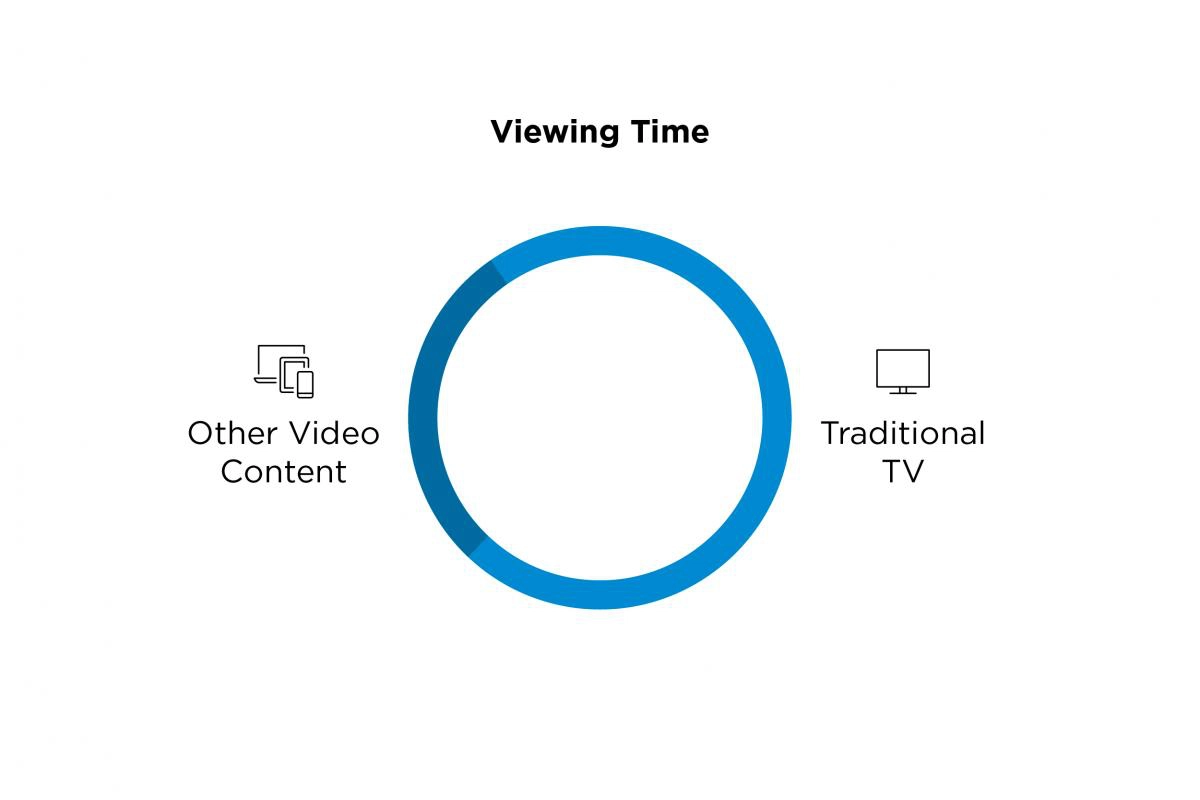We all know TV isn’t what it used to be. But what does “TV” mean in 2020? In honor of World Television Day, we’re taking a look at viewers’ opinions and the range of TV services available today.
Before we dive in, here’s what you should know about World Television Day.
About World Television Day
World Television Day is intended to recognize TV’s role in the global exchange of ideas and freedom of information. It dates back to November 21, 1996, when the United Nations kicked off its first World Television Forum and leading media figures met “to discuss the growing significance of television in today’s changing world.” Since then, World Television Day is recognized annually on November 21 as a celebration of “communication and globalization in the contemporary world.” It hails TV as a tool for “informing, channeling and affecting public opinion.”
What is TV? A Survey
Since World Television Day’s inception 24 years ago, the TV landscape has wholly transformed.
We asked more than 1,000 people what TV is and, well, the definition depends on who you ask. But there are some key themes around device, content length, and TV service.
The device matters, sort of. More than half of respondents, 54%, say the device is what makes content count as TV. And while 97% say it’s TV if it’s on a TV screen, they’re open to devices. Most respondents said TV can be viewed on mobile devices, tablets, and desktops.
For many, TV is longform, premium content. Forty one percent say it counts as TV if content is viewed by broadcast, cable, or a similar service. And 40% say it’s TV if it’s long-form content like an episodic show or a sports game. The magic length is 20 minutes. People typically say they’re “watching TV” if the content is 20 minutes or longer.
Breaking Down TV Services
So we know that TV is typically considered premium, multiscreen, longform content. But within that definition is a world of TV services available to viewers.
First and foremost, there’s traditional linear TV. Linear TV is cable or broadcast content that can be viewed live or time-shifted. This is still what a lot of people think of when they think of TV, and in fact, it still accounts for nearly three-quarters of viewers’ total video time.
Then there’s over-the-top (OTT) content. This is an umbrella term that encompasses all video streamed over the internet, regardless of device.
When OTT content is viewed on a TV screen, it’s called Connected TV (CTV). Since CTV accounts for most OTT viewing time, the terms are often used interchangeably.
TV Everywhere (TVE) is another subset of OTT that means traditional TV content streamed over the internet on any device. TVE is viewed in apps that require viewers to log in and have a subscription to a cable or satellite TV service.
There’s also video on demand (VOD) content that can be viewed across devices at any time.
Subscription VOD (SVOD) refers to paid VOD services, whereas ad-supported VOD (AVOD) is free. Both of these are types of OTT, as well.
And set-top box VOD (STB VOD) is content available on demand through a cable provider and can only be watched on a TV screen. Since STB VOD doesn’t use the internet, it’s separate from OTT.
Here’s a summary:
| Device | Access | Content | |
| Linear TV | TV | Cable or Broadcast | Premium |
| OTT | Any | Internet | Any |
| CTV | TV | Internet | Any |
| TVE | Any | Internet | Premium |
| VOD | Any | Internet | Any |
| SVOD | Any | Internet | Premium |
| AVOD | Any | Internet | Any |
| STB VOD | TV | Cable | Premium |
The Role of Data in TV
It’s clear the way consumers watch TV has evolved, with more screens and more content than ever. Alongside these viewing changes are data and technology changes that have made TV advertising smarter and more effective.
Increased data has enabled advertisers to plan campaigns based on audience rather than daypart and network. Now, viewership data and third-party demographic and psychographic data can be used together to determine what any particular audience likes to watch. With this information, ads can be inserted addressably to deliver targeted messaging precisely to the right audiences, regardless of how or what they’re watching. Addressable advertising can also be targeted geographically to reach only the most relevant households. Ads can be delivered locally at the cable zone level, within a particular region, or nationally.
Combining these addressable capabilities with traditional, broad-reach TV advertising has turned TV into a full-funnel solution. Advertisers can widely deliver a general message to increase awareness, and then deliver more specific messaging to particular audiences in order to drive consideration and intent.
TV has evolved over the years to be more user-friendly, offer more flexibility, and drive more value for advertisers. On this World Television Day, let’s acknowledge and celebrate how far this essential medium has come.
To learn more about TV advertising and receive a free advertising consultation, contact us.





